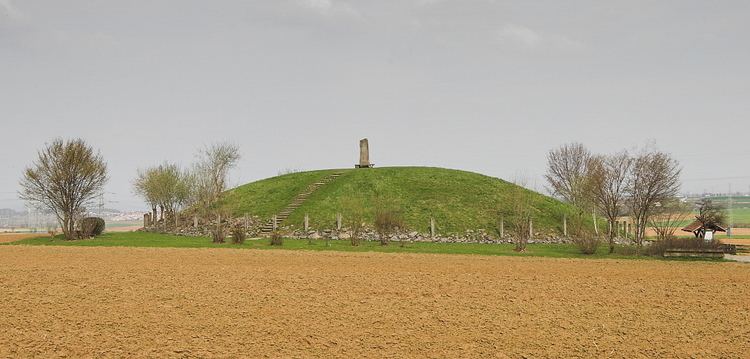Phone +49 7042 78911 | ||
 | ||
Hours Closed today MondayClosedTuesday9:30AM–12PM, 1:30–5PMWednesday9:30AM–12PM, 1:30–5PMThursday9:30AM–12PM, 1:30–5PMFriday9:30AM–12PM, 1:30–5PMSaturday10AM–5PMSunday10AM–5PM Similar Heuneburg, Heuneburgmuseum, Keltenwelt am Glaub, Hohenasperg, Heidengraben Profiles | ||
The Hochdorf Chieftain's Grave is a richly-furnished Celtic burial chamber dating from 530 BC, in the Hallstatt culture period D. An amateur archaeologist discovered it in 1977 near Hochdorf an der Enz (municipality of Eberdingen) in Baden-Württemberg, Germany. By then, the originally 20 ft (6 m) high burial mound covering the grave, which is about 200 ft (60 m) in diameter, had shrunk to about 3 ft (1 m) height and was hardly discernible due to centuries of erosion and agricultural use.
A man, roughly 40 years of age and 6 ft 2 in (187 cm) tall, was laid out on an exceptionally richly decorated 9 ft (275 cm) bronze recliner with eight wheels inside the burial chamber. Judging by other objects found there, this man probably had been a Celtic chieftain: He had been buried with a gold-plated torc on his neck, a bracelet on his right arm, a hat made of birch bark, a gold-plated dagger made of bronze and iron, rich clothing, amber jewelry, a razor knife, a nail clipper, a comb, fishing hooks, arrows, and most notably, thin embossed gold plaques were on his now-disintegrated shoes. At the foot of the couch was a large cauldron decorated with three lions around the brim. This cauldron was originally filled with about 100 gallons (400 l) of mead. The east side of the tomb contained an iron-plated wooden four-wheeled wagon holding a set of bronze dishes—along with the drinking horns found on the walls enough to serve nine people.
After the examination of the grave, the burial mound has been reconstructed to its original height. Nearby a museum about this grave was built, during the construction of which the foundations of an ancient Celtic village were found, probably the one to which the chieftain belonged. These were incorporated into the museum.
